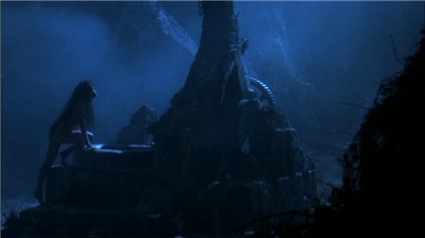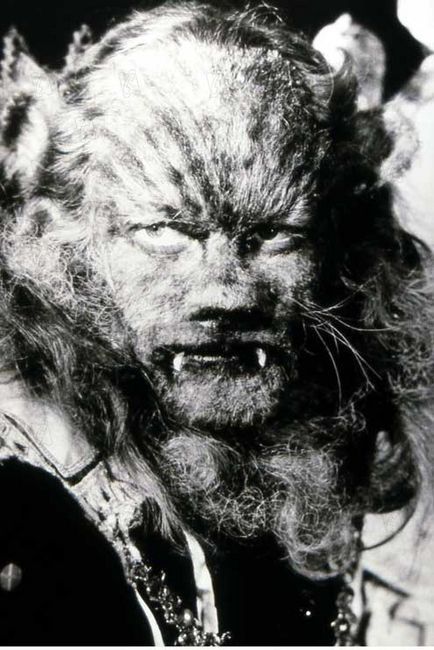“Hello, not that it matters but I never got into this game for personal greed or a higher power, my motives were pure as such was my desire to reach the other end of the world unbound by the sea, the earthly matter or the time space continuum. “Stitch” will soon be a mere memory constructed by the unyielding Waldepeer, the nemesis, a human anomaly, a catastrophe... my unwelcomed house guest, who could imagine the best intentions could be met with such an unsuspected conclusion.”

The Animal fate chosen for Stitch | 
The Human to Walrus size comparison |
The results confirm the computers hypothesis "Waldepeer" is knocking on the gates, ringing the doorbell & breaking through the walls that protect my remaining humanity.
“How do you choose which animal to become? Her father laughed. You don’t daughter . Most of us have but one animal form; we become the animal most like our inner spirit”. (Bennett, 2010:03)
Something should have told me to turn back when my pet Walrus started trashing my lab, I should never have used poor Fred & I should never have ignored the italicised theory. His anger outbursts almost appeared to be human but when I looked into his eye I saw something different.
The basis of the concept was pure and selfless but what I never considered was if such a thing should exist in this world. Particles dissimilate breaking us down to our core and reattach us or reattach what the computer considers to be “us”, its best interpretation. The computer cannot recreate what is in our hearts, our memory, what makes us the true definition of our original selves. We are not teleported; we are merely reborn in a new shell while the old shell is shattered leaving a mere husk in the pod opposite.

The Human Skeleton | 
The Walrus Skeleton |
“Imperfect, something is lost in translation... did I murder myself?”
My research has given me a rough guide, the course that the transformation will likely take, part of me is scared... but the part that is foreign wills the change to continue.
“Before she could jump to her feet and scare him off, before her intention to do so had fully formd the change took her. The world rippled and blurred in her vision. Her body was lost to her in such an utterly strange gust of streaming sensation, blood and bone and flesh all swept into hurtling flux, that she could not think of it as her own. She was formless, and then she was sucked into the alien shape like molten metal flowing into a mould”. (Bennett, 2010:07)
Transformation Timeline (Narrative) -
• Day 1
I hadn’t noticed when climbing into the pod the first and final time that Fred had climbed in a few days prior to cause more carnage... and he did, leaving molecules of Walrus DNA and a broken fragment from his left tusk. With a sudden buzz I shot over to the other pod, the teleporter worked! I was at the top of my game, marvelling at my own genius... what a fool I was.
• Day 5
Things started slow, my strength started to become un-matched my desire grew for fresh shellfish (every night) and to think I used to hate seafood. I crushed a professor’s hand with my grip which to me was lax, I had to apologise but deep down I already knew something was going on.
• Day 7
My gums had been bleeding and were sensitive to the touch, I first wrote it off as a fast and rough clean of my teeth that morning. My mouth was in pain for the entire day, I ended up eating a bucket of ice cream just to keep the temperature of my gums down.
“Walruses are a WhaleTimes favorite. They are powerful, social animals. Walruses skin can be as much as 6 inches thick on their neck. As most people know, they also have tusks. The tusks can be as long as 1 meter (3.2 feet) long. The tusks are used to establish dominance, defend themselves and to help them climb out of the water on to the ice”. (Musgrave: 2011)
• Day 8
The taste of blood had occupied my mouth all night along with the overwhelming pain. I could only eat soup, I had to get to the bottom of this problem, the pain was worth the curiosity. Looking in the mirror I noticed the tip of two secondary teeth overcutting my left and right canines.
“I was still unaware but deep down buried in the shadows he knew his time was almost here”
• Day 12
My original canines had fallen out in the early hours of the morning leaving these two (unknown) increasing replacement canines which were sharper then my original 2. A rash had appeared on my upper chest which was very itchy, the palms of my hands felt dry as if my calluses had expanded. My hair had started falling out & my back muscles had grown into the realms of my neck.
• Day 15
The webbing of my thumb had merged into the base of my hand and my thumb appeared longer nearly the length of my index, my knuckles were hurting as were my feet. It hurt to bend my fingers and toes, it was almost like calcium deposits had built up and shut any exterior appendages down, my bones felt like they were merging together.
• Day 17
The pain had somewhat subsided in my mouth feeling at ease I walked to the bathroom only to see the reality. My face had shifted to accommodate these talon like tusks which were now bigger then every other tooth in my mouth. The rash on my chest had hardened and changed colour just like the skin on my palms and feet, my fingers could no longer bend, neither could my toes. My eyes had gone dusky causing severe tunnel vision. The thing that scared me the most was... a part of me liked it.
• Day 20
Upon getting out of bed my back made a nasty cracking sound, I couldn’t move... I was scared. The only thing I could do was lay there until I fell back into a slumber.
• Day 21
I awoke to find the pain gone but the cracking sound concerned me, the reason was evident when I rose to my feet. My pelvic bone had shifted, it was now narrow, my legs could no longer open wide. I took a gaze at my hands to see the webbing had spread connecting all of my fingers together. My toes were no different... I could feel the bones in my hands as if the muscle had moved elsewhere. I could bend my fingers right back with no pain at all. My teeth now protruded from my mouth reaching my chin...
“What is happening to me?”
• Day 24
I broke my legs this morning, the muscle had seemed to have disappeared. I crawled over to my granddad’s wheelchair and took this moment to visit the bathroom. My hands and feet now looked like fins which appeared to be slowly descending down my legs and arms. My skin was now solid with a granite like texture, I was a de-saturated reddish brownish colour. My face was narrower, my ears had shrunk, all of my teeth had sharpened to the level of the giant canines. My eyes were now midnight black... the colour had been washed away.

The Walrus Hide (skin) | 
The Human Skin |
• Day 25
I slept in my granddads wheelchair, moving hurt too much. My legs had now banded together to form one 5 toed fin. My body mass had engulfed my skeleton my groin was now part of the large central blubber, smooth but tough like the rubber on a car tire. My arms had fully retreated into some form of flipper with just enough strength to carry my body.
“Walrus’s can live comfortably in the Arctic because they are adapted for life in the cold. Beneath their skin is a layer of fat, called blubber, that can be up to four inches (10 cm) thick. Just like a winter coat, the blubber is very good insulation. It keeps the Walrus’s body heat inside the animal, allowing the walrus to stay warm in the bitter cold”. (Person, 2011:10)
“I could only crawl with my tusks, Waldepeer is here & he wants his fish”

Stitch Facial Turn Around
The End ResultI will be a mean beast indeed...
Over & Out,
xXStItChXx-----------------------------------------------------------------------
List of Illustrations
Figure 1. The Animal fate chose for Stitch. (com) [Online image]. At:
http://i23.photobucket.com/albums/b399/neottix/UCA%20Unit%201%20Albumn/IMG.jpg (Accessed on: 21/09/11)
Figure 2. The Human to Walrus size comparison. (com) [Online image]. At:
http://images.nationalgeographic.com/wpf/media-live/graphic/size-walrus-160-2937-cb1293633369.gif (Accessed on: 21/09/11)
Figure 3. The Human Skeleton. (com) [Online image]. At:
http://cache2.artprintimages.com/p/LRG/15/1501/DMBBD00Z/art-print/andreas-vesalius-human-skeleton.jpg (Accessed on: 21/09/11)
Figure 4. The Walrus Skeleton. (com) [Online image]. At:
http://palaeo.gly.bris.ac.uk/Palaeofiles/Pinnipeds/images/skeleton.jpg
(Accessed on: 21/09/11)
Figure 5. The Walrus Hide (skin). (com) [Online image]. At:
http://farm5.static.flickr.com/4009/5161574983_2df3868dc5.jpg (Accessed on: 21/09/11)
Figure 6. The Human Skin. (com) [Online image]. At:
http://images.sciencedaily.com/2007/11/071129183833-large.jpg (Accessed on: 21/09/11)
Figure 7. Stitch Facial Turn Around. (com) [Online image]. At:
http://i23.photobucket.com/albums/b399/neottix/UCA%20Unit%201%20Albumn/turnround.jpg (Accessed on: 21/09/11)
Figure 8. The End Result. (com) [Online image]. At:
http://www.animalpictures.tk/wp-content/uploads/pictures/walrus-50.jpg (Accessed on: 21/09/11)
-----------------------------------------------------------------------
Bibliography
Bennett, Holy. (2010) Shapeshifter. 1st ed. Canada
Musgrave, Ruth A. (2011) Fishin'for Facts: Walruses At:
http://www.whaletimes.org/walrus.htm (Accessed on: 21/09/11)
Person, Stephen. (2011) Walrus: Tusk, Tusk. 1st ed. United States of America: New York















 Figure 1. La Belle et la Bête Poster Art.
Figure 1. La Belle et la Bête Poster Art. Figure 2. Bring me a rose father for there are no roses here.
Figure 2. Bring me a rose father for there are no roses here. Figure 3. I repel you, you find me ugly
Figure 3. I repel you, you find me ugly Figure 4. When you return Beauty, will you be my wife?
Figure 4. When you return Beauty, will you be my wife? Figure 5. I am the monster you must live my beast
Figure 5. I am the monster you must live my beast 
























 Figure 1. The Fly 1986 Poster Art.
Figure 1. The Fly 1986 Poster Art. Figure 2. Brundle’s finger nails allow him to confirm he has problems.
Figure 2. Brundle’s finger nails allow him to confirm he has problems.  Figure 3. “Help me be Human”.
Figure 3. “Help me be Human”.  Figure 4. Regurgitated lunch anyone?
Figure 4. Regurgitated lunch anyone?  Figure 5. They both have their strengths and weaknesses.
Figure 5. They both have their strengths and weaknesses. Figure 1. The Fly 1958 Poster Art.
Figure 1. The Fly 1958 Poster Art. Figure 2. Andre Hides his Face.
Figure 2. Andre Hides his Face.  Figure 3. Andre’s Transformation is revealed.
Figure 3. Andre’s Transformation is revealed.  Figure 4. A closer look at the Web.
Figure 4. A closer look at the Web.  Figure 5. Help me! Help me!
Figure 5. Help me! Help me!